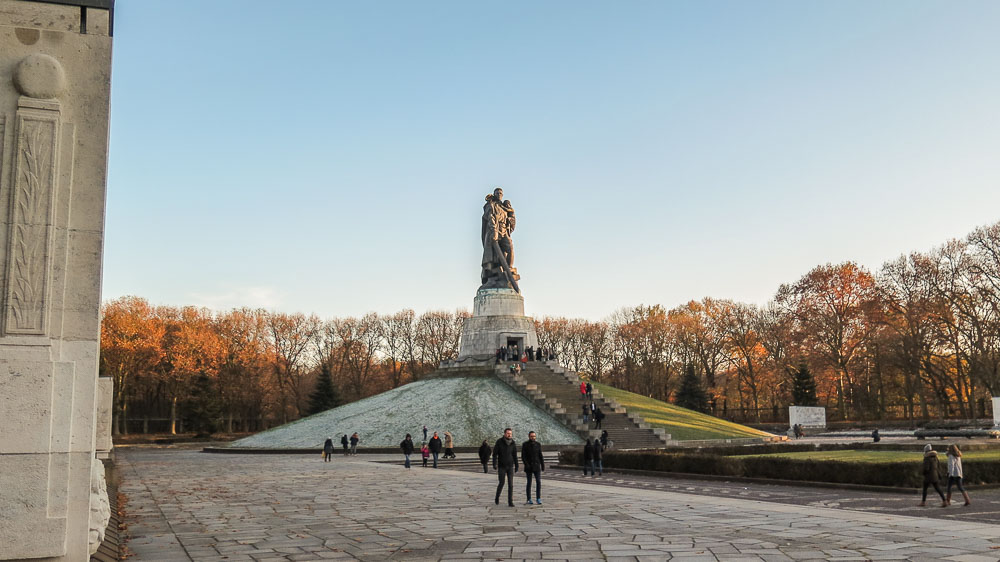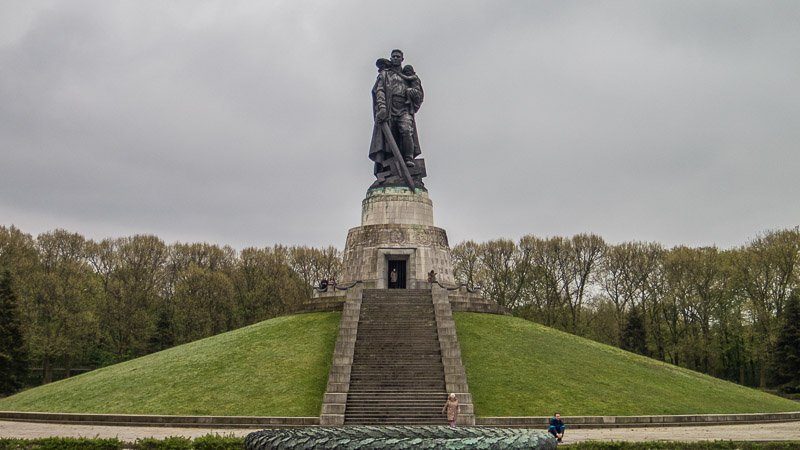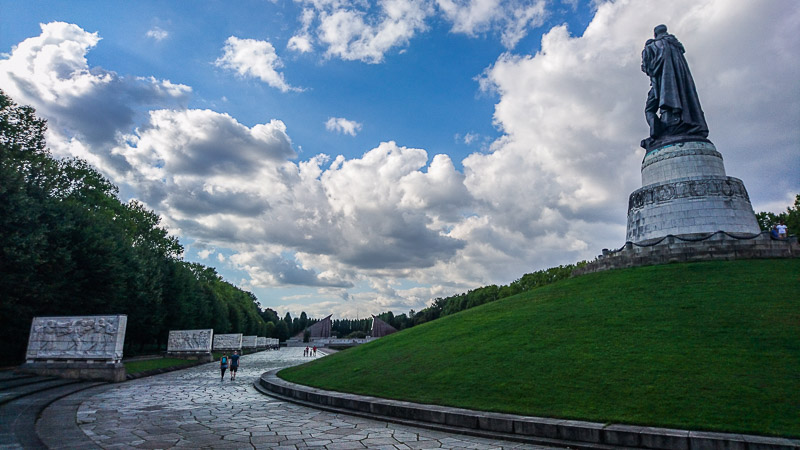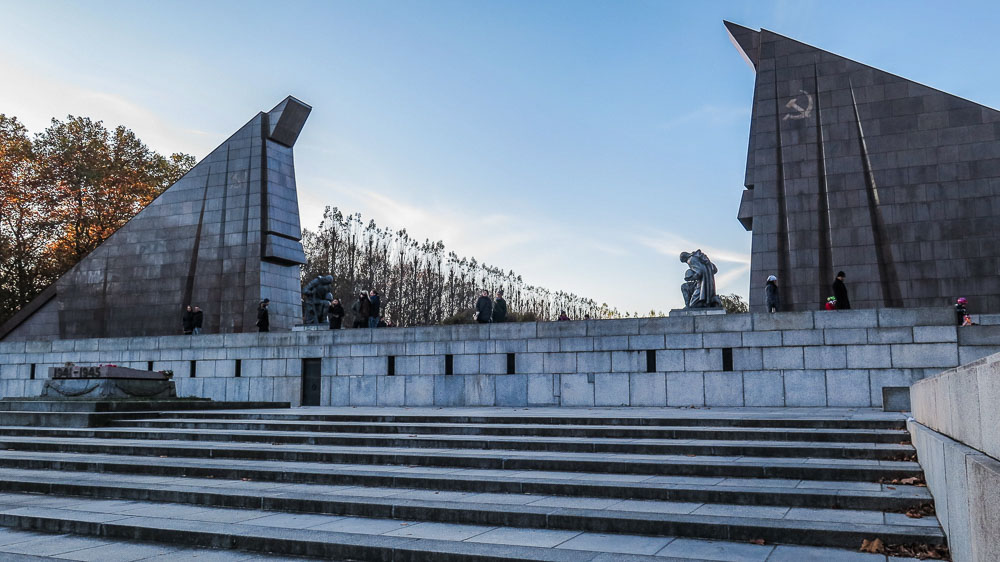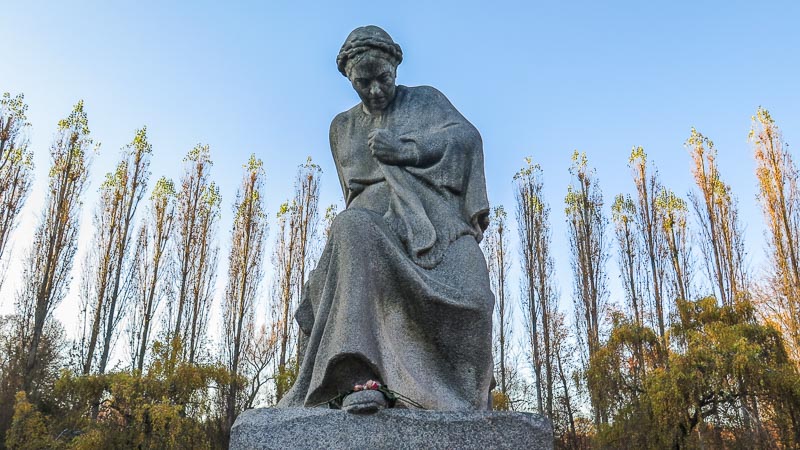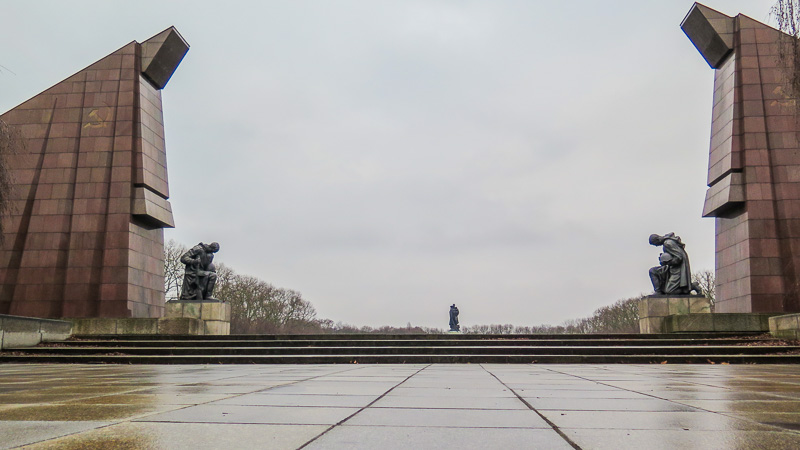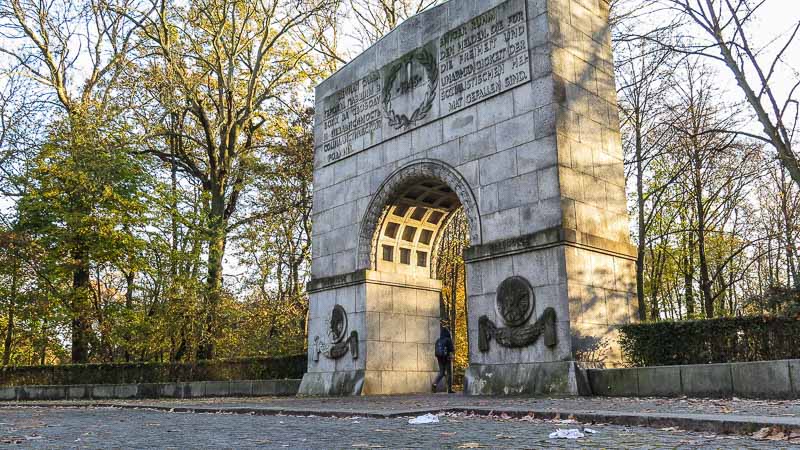The overwhelming size and the impressive design make the Soviet War Memorial in Treptower Park the most impressive testimony of the Battle of Berlin. It is dedicated to the Soviet victims of the final battle for Berlin in World War II.
Almost hidden between big trees of a huge park, the impressive Soviet War Memorial opens up. Walking through the large portal to the central part of the complex, one feels very small as a human being. This is probably exactly the effect the architects were aiming for. After the war, the Soviet head of state Joseph Stalin was at the zenith of his power and autocracy. This Soviet War Memorial was intended to symbolize the monumental significance of the Soviet Union's victory over National Socialist Germany for all eternity. Stylistically, the memorial corresponds to the spirit of the times and resembles in its use of forms the other two large Soviet War Memorials in the Tiergarten and the Schönholzer Heide.
Of the three large Soviet War Memorials in Berlin, the one in Treptower Park is the most important and thus largest. It is not only the largest memorial in Germany, but is also one of the largest anti-fascist monuments in Europe. The memorial is also the final resting place for over 7,000 of the almost 80,000 Soviet and Polish soldiers who died in the Battle of Berlin (more than 20,000 died in Berlin alone). Given the large number of tourists, this is sometimes forgotten. The choice for this location was not accidental. Already in 1945 fallen Soviet soldiers were buried here. So the memorial was built around an already existing war grave site. After about four years of planning and construction, the Soviet War Memorial in Treptower Park was inaugurated in 1949.
The memorial is dominated by a huge statue representing a Red Army soldier holding a lowered sword in one hand and a small child on the other arm. A swastika is pulped under his boot. The sculpture is enthroned on top of a mausoleum, whose mosaic inside surprises, because it combines religious and Soviet aesthetics. According to GDR historiography, the sculpture is based on the story of a Soviet soldier who saved a little girl during the battle of the Reich Chancellery. In fact, the sculptor explained on several occasions that the child is simply a symbol of a peaceful new beginning and that he had no concrete event in mind. However, the child is Soviet, since the model was Svetlana Kotikow, the daughter of the then Soviet city commander of Berlin.
Find out more about our Guided Tour Soviet War Memorial Berlin Treptower Park.
Further interesting blog posts about Berlin's Soviet history as well as guided tours in Berlin, Potsdam and beyond can be found on our pages.
